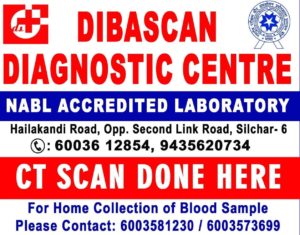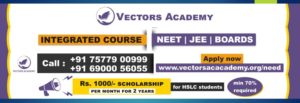India & World UpdatesBusinessBreaking News
Bureau of Indian Standards publishes 10 Indian Standards on safety aspects of Toys
No person is permitted to manufacture, import sell or distribute, store, hire, lease or exhibit for sale toys which do not bear ISI Mark under a licence from BIS

July 21: Bureau of Indian Standards, the national standards body of India has published 10 Indian Standards on safety aspects of Toys related to physical safety, safety against chemicals, flammability, electrical safety etc. These standards prevent the use of unsafe and toxic materials in manufacturing of toys.
 Out of these 10 standards, 7 are the part of Quality Control Order (QCO) on ‘Safety of Toys’. This Quality Control Order makes it mandatory that toys for children under 14 years of age conform to 7 Indian Standards (List attached) for Safety of Toys and bear a Standard Mark (ISI Mark) under licence from BIS. This Government guideline came into force from 1st Jan 2021.
Out of these 10 standards, 7 are the part of Quality Control Order (QCO) on ‘Safety of Toys’. This Quality Control Order makes it mandatory that toys for children under 14 years of age conform to 7 Indian Standards (List attached) for Safety of Toys and bear a Standard Mark (ISI Mark) under licence from BIS. This Government guideline came into force from 1st Jan 2021.
 BIS grants licences to toy manufacturing units based on an assessment of their manufacturing and testing capability through factory visit as well as testing of toys in a BIS Lab or BIS Recognized Lab as per the Indian Standards. No person is permitted to manufacture, import sell or distribute, store, hire, lease or exhibit for sale toys which do not conform to the Indian Standard and do not bear BIS Standard Mark i.e. “ISI Mark” under a licence from BIS.
BIS grants licences to toy manufacturing units based on an assessment of their manufacturing and testing capability through factory visit as well as testing of toys in a BIS Lab or BIS Recognized Lab as per the Indian Standards. No person is permitted to manufacture, import sell or distribute, store, hire, lease or exhibit for sale toys which do not conform to the Indian Standard and do not bear BIS Standard Mark i.e. “ISI Mark” under a licence from BIS.
 Before licence is granted, toys undergo stringent tests for various physical, chemical and electrical safety requirements to ensure that they are safe for children. Tests are done to check choking hazard, sharp points (Sharp Point Test) and sharp edges (Sharp Edge Tests) which could puncture the skin and injure a child. Chemical tests are done to determine concentration of certain toxic elements such as antimony, arsenic, barium, cadmium, chromium, lead, mercury, and selenium in toys to ensure that they are within safe limits. The safety with respect to electrical aspects of toys is ensured by carrying out tests for power input, electric strength, moisture resistance, heating & abnormal operation. Also tests like mechanical strength, construction, screws & connections, protection of cords & wires, clearances & creepage distances, components, resistance to heat & fire etc.
Before licence is granted, toys undergo stringent tests for various physical, chemical and electrical safety requirements to ensure that they are safe for children. Tests are done to check choking hazard, sharp points (Sharp Point Test) and sharp edges (Sharp Edge Tests) which could puncture the skin and injure a child. Chemical tests are done to determine concentration of certain toxic elements such as antimony, arsenic, barium, cadmium, chromium, lead, mercury, and selenium in toys to ensure that they are within safe limits. The safety with respect to electrical aspects of toys is ensured by carrying out tests for power input, electric strength, moisture resistance, heating & abnormal operation. Also tests like mechanical strength, construction, screws & connections, protection of cords & wires, clearances & creepage distances, components, resistance to heat & fire etc.
 Even after BIS licence is granted, toy manufacturing units are required to ensure that the toys produced by them are tested regularly and follow a defined Scheme of Inspection and Testing. As a part of its market and factory surveillance activities, BIS conducts surveillance visits at the licensed manufacturing units and also draws samples of toys from the factories and the market and gets them tested at BIS labs and BIS recognized labs. More than 800 Toy manufacturers, mostly from the MSME sector, have already taken BIS certification.
Even after BIS licence is granted, toy manufacturing units are required to ensure that the toys produced by them are tested regularly and follow a defined Scheme of Inspection and Testing. As a part of its market and factory surveillance activities, BIS conducts surveillance visits at the licensed manufacturing units and also draws samples of toys from the factories and the market and gets them tested at BIS labs and BIS recognized labs. More than 800 Toy manufacturers, mostly from the MSME sector, have already taken BIS certification.
 Consumers should ensure that they purchase only safe toys bearing the “ISI Mark” from the market. Also, consumers must complaint if they see any toy being sold without the “ISI Mark”. Complaints can be filed through BIS Care app (download from Google Play Store) or write to complaints@bis.gov.in
Consumers should ensure that they purchase only safe toys bearing the “ISI Mark” from the market. Also, consumers must complaint if they see any toy being sold without the “ISI Mark”. Complaints can be filed through BIS Care app (download from Google Play Store) or write to complaints@bis.gov.in
 Out of the 10 standards published by BIS on safety aspects related to physical safety, safety against chemicals, flammability, electrical safety etc., 7 standards that are the part of Quality Control Order on ‘Safety of Toys’, are detailed below:
Out of the 10 standards published by BIS on safety aspects related to physical safety, safety against chemicals, flammability, electrical safety etc., 7 standards that are the part of Quality Control Order on ‘Safety of Toys’, are detailed below:
1. IS 9873 (Part 1):2019/ ISO 8124-1 : 2018 Safety requirements for toys: Part 1 Safety aspects related to mechanical and physical properties
2. IS 9873 (Part 2) : 2017/ ISO 8124-2 : 2014 Safety requirements for toys: Part 2 Flammability requirements
3. IS 9873 (Part 3) : 2020/ ISO 8124-3 : 2020 Safety requirements for toys: Part 3 – Migration of certain elements
 4. IS 9873 (Part 4) : 2017/ ISO 8124-4 : 2014 Safety of Toys Part 4 Swings, Slides and Similar Activity Toys for Indoor and Outdoor Family Domestic Use
4. IS 9873 (Part 4) : 2017/ ISO 8124-4 : 2014 Safety of Toys Part 4 Swings, Slides and Similar Activity Toys for Indoor and Outdoor Family Domestic Use
5. IS 9873 (Part 7) : 2017/ ISO 8124-7 : 2015 Safety of Toys Part 7 Requirements and Test Methods for Finger Paints
6. IS 9873 (Part 9) : 2017 Safety of Toys Part 9 Certain Phthalates Esters in Toys and Children Products
7. IS 15644:2006/ IEC 62115: 2003 Safety of Electric Toys





